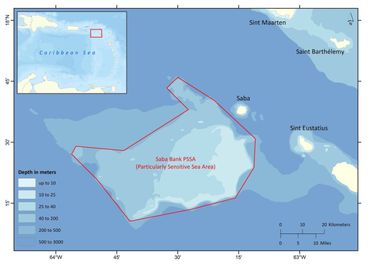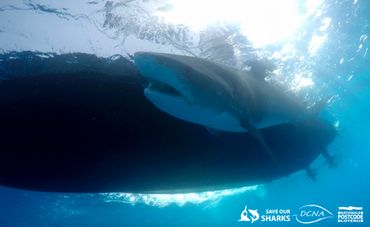
Shark expedition to the Saba Bank
Dutch Elasmobranch Society (NEV), Nature Foundation St Maarten, Saba Conservation Foundation (SCF)The Dutch Elasmobranch Society (NEV), the Saba Conservation Foundation (SCF) and the Nature Foundation Sint Maarten (NFSM) are leading the expedition to the Saba Bank for shark research. Scientific projects will be carried out during this ten-day expedition with research focused on the shark species that occur in this part of the Caribbean Sea, including tiger sharks, silky sharks, nurse sharks, and Caribbean reef sharks. The overall goal of the research is to gain insight in the role that the Saba Bank plays in the life cycle of the species that live there: knowledge that is essential to adequately protect sharks.

“The expedition offers a unique opportunity to conduct new research on the shark community on the Saba Bank”, explained Irene Kingma, expedition leader from the NEV. “We brought scientists from six countries together to help solving the big questions we still have about sharks in this unique area, and to develop partnerships for future research.”
Space technology for tiger sharks
During the expedition, tiger sharks will be provided with tags equipped with a completely new satellite technology developed by the European Space Agency (ESA). The space organization has developed an advanced technology that allows the tags to communicate with satellites in space in an innovative way allowing the tags to last much longer and collect much more data than the tags currently used.
Preventing by-catch of nurse sharks
NEV and SCF work together with local fishermen to reduce the by-catch of nurse sharks in lobster traps. One essential element to achieve this is getting insight in the behaviour of sharks in and around the traps. Dr. Robert Nowicki of the Mote Marine Lab developed a camera system that can record the behaviour of sharks near the traps for up to a week.
Connectivity between habitats of Caribbean sharks
 Between 2015 and 2018, a number of silky sharks, Caribbean reef sharks, and nurse sharks were equipped with an acoustic tag to find out more about how these species use the area, and about the connectivity between different Caribbean habitats. In addition to this research, Guido Leurs from the University of Groningen will collect samples of Caribbean reef and nurse sharks to analyse diet and age of the sharks. Combined with the knowledge from the tagging program, this will offer much more insight in the role the Saba Bank plays in the life cycle of these sharks.
Between 2015 and 2018, a number of silky sharks, Caribbean reef sharks, and nurse sharks were equipped with an acoustic tag to find out more about how these species use the area, and about the connectivity between different Caribbean habitats. In addition to this research, Guido Leurs from the University of Groningen will collect samples of Caribbean reef and nurse sharks to analyse diet and age of the sharks. Combined with the knowledge from the tagging program, this will offer much more insight in the role the Saba Bank plays in the life cycle of these sharks.
Stress levels of sharks in captivity
Blood samples will be taken from all sharks caught, to determine the level of stress hormones in their systems. Based on this, the researchers, led by James Thorburn of St. Andrews University in Scotland, will determine how much stress the animals experience when they are examined for the different experiments. This information can be used to make the catch and research process as efficient as possible so that the animals are not adversely affected by the procedures.
Updates on the expedition will be posted on the Facebook, Instagram and Twitter pages of Save our Sharks. Blogs about the expedition will also appear on DuikenInBeeld (in Dutch) and on Southern Fried Science.
Text: Dutch Elasmobranch Society (NEV), Saba Conservation Foundation (SCF) and Nature Foundation Sint Maarten (NFSM)
Foto: Duncan Brake
Kaart: DCNA
